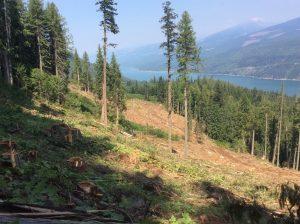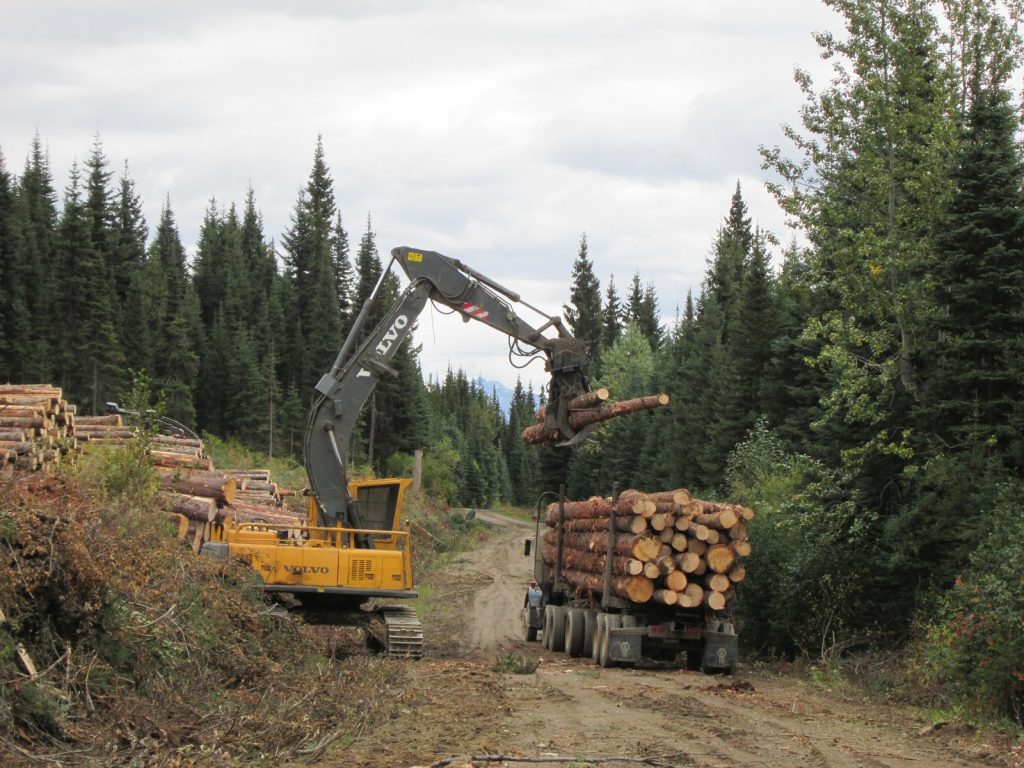History

In 2006 a small group of individuals got together with the Village of Valemount to start a community forest. That year the largest local employer had permanently laid off employees and closed the lumber mill.
The Village of Valemount had been working towards a community forest licence since 1999 with valuable funding supporters such as from the Columbia Basin Trust and the Western Economic Diversification Canada to complete forest sector feasibility studies and strategies.
The Valemount Community Forest Company Ltd. (VCF) officially started in 2008 with the Village of Valemount as its sole shareholder, by hiring a General Manager, purchasing modest forestry equipment and renting an office. It was a challenging time to start a new enterprise, as it coincided with the collapse of the global economy. During the first year of operation, the annual allowable cut increased from 40,000 m3 to 190,000 m3 in order to manage for the catastrophic Mountain Pine Beetle epidemic. The primary focus was to retain jobs in the small rural community by creating local employment and developing local manufacturing.
In July of 2009, the first load of logs was shipped to market from Valemount Community Forest Co. Ltd. In 2014, the VCF with the Board of Directors and two staff worked on expansion and purchased the ‘old mill site’ (renamed the Valemount Industrial Park) with financial support from Northern Development Initiative Trust and Columbia Basin Trust. In 2016, the VCF purchased a Forest Licence from Carrier Lumber Ltd. and converted it into a Community Forest Agreement. These two acquisitions helped strengthen local employment and enhance opportunities to develop local manufacturing.
As of January 1, 2019, the VCF split into two limited partnerships. The companies are the Valemount Community Forest and the Valemount Industrial Park (VIP). The new companies separate the Village from the business of forestry and industrial land management.
What is a Community Forest?

It is an area based tenure issued by the Ministry of Forests, Lands and Natural Resource Operations under the Forest Act to a community or society. The VCF’s Community Forest Agreement is a twenty-five-year renewable tenure.
A Community Forest manages a specified forest area, called an “area based” tenure, that harvests the timber in a sustainable way to benefit the community.
The challenge with managing a community forest is balancing all values and stakeholders needs in the community. These includes recreation, the environment, business, education and providing employment.
The Valemount Community Forest is comprised of two Community Forest Licences K2T and K5Q. Click here to open map which shows K2T in green and K5Q in blue. The latest inventory data shows that the sustainable Annual Allowable Cut (AAC) for both K2T and K5Q is 95,406 m3.
Guiding Principles
- Manage the VCF for the long-term benefit of the community, protecting and enhancing resource values that contribute to the social well being of residents
- Collaborate with others to diversify the local economy and benefits from the VCF including recreational users, tourism based companies, local businesses, volunteer organizations, educational institutions and First Nations
- Manage the company in a responsible, profitable manner, providing a source of revenue to the community and the Province
- Responsibly manage and conserve all of the VCF resources using the principles of environmental stewardship, complying with all legislative, regulatory and legal requirements of the licence
- Communicate regularly with the public to solicit and incorporate their values and priorities into the management strategies for the VCF
- Respect and communicate regularly with First Nations, soliciting their knowledge of the forest and seeking their participation in preparing strategies that protect cultural heritage sites and traditional use areas
- Foster innovation by creating new economic opportunities and sources of revenue for local workers and the community; incorporate innovative practices into all aspects and phases of resource management and seek innovative solutions to minimize negative impacts on the resources
- Prioritize safety for all